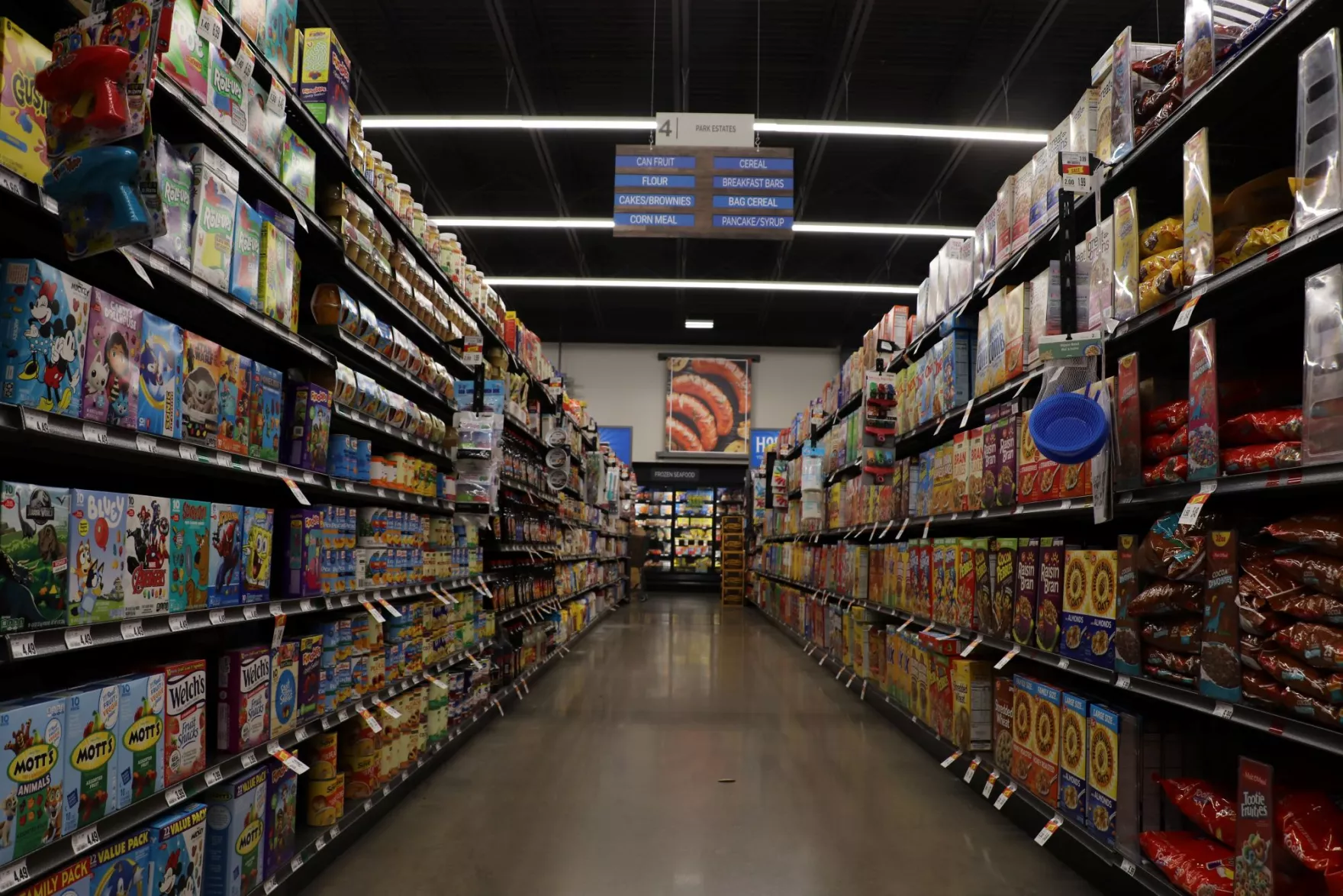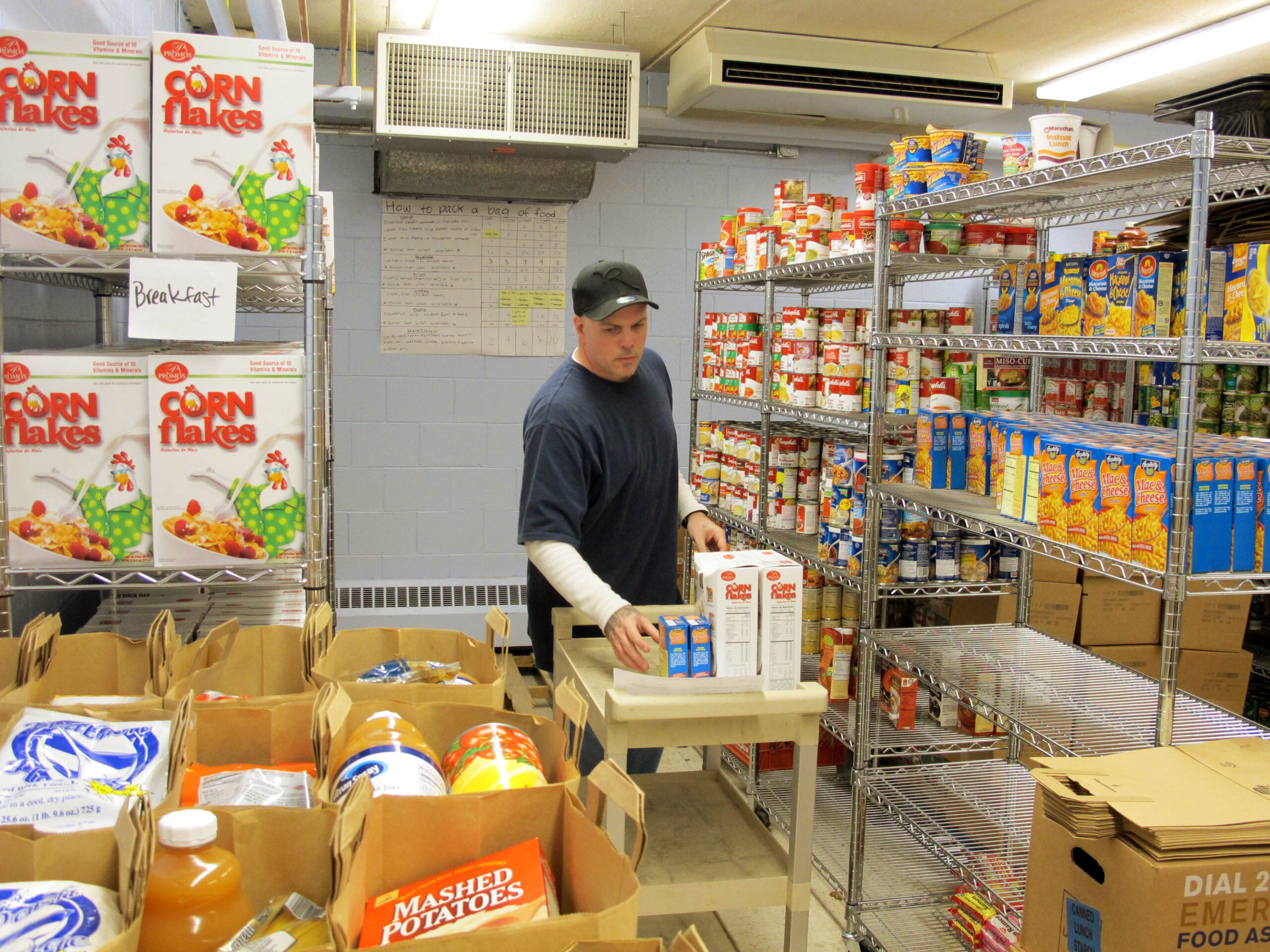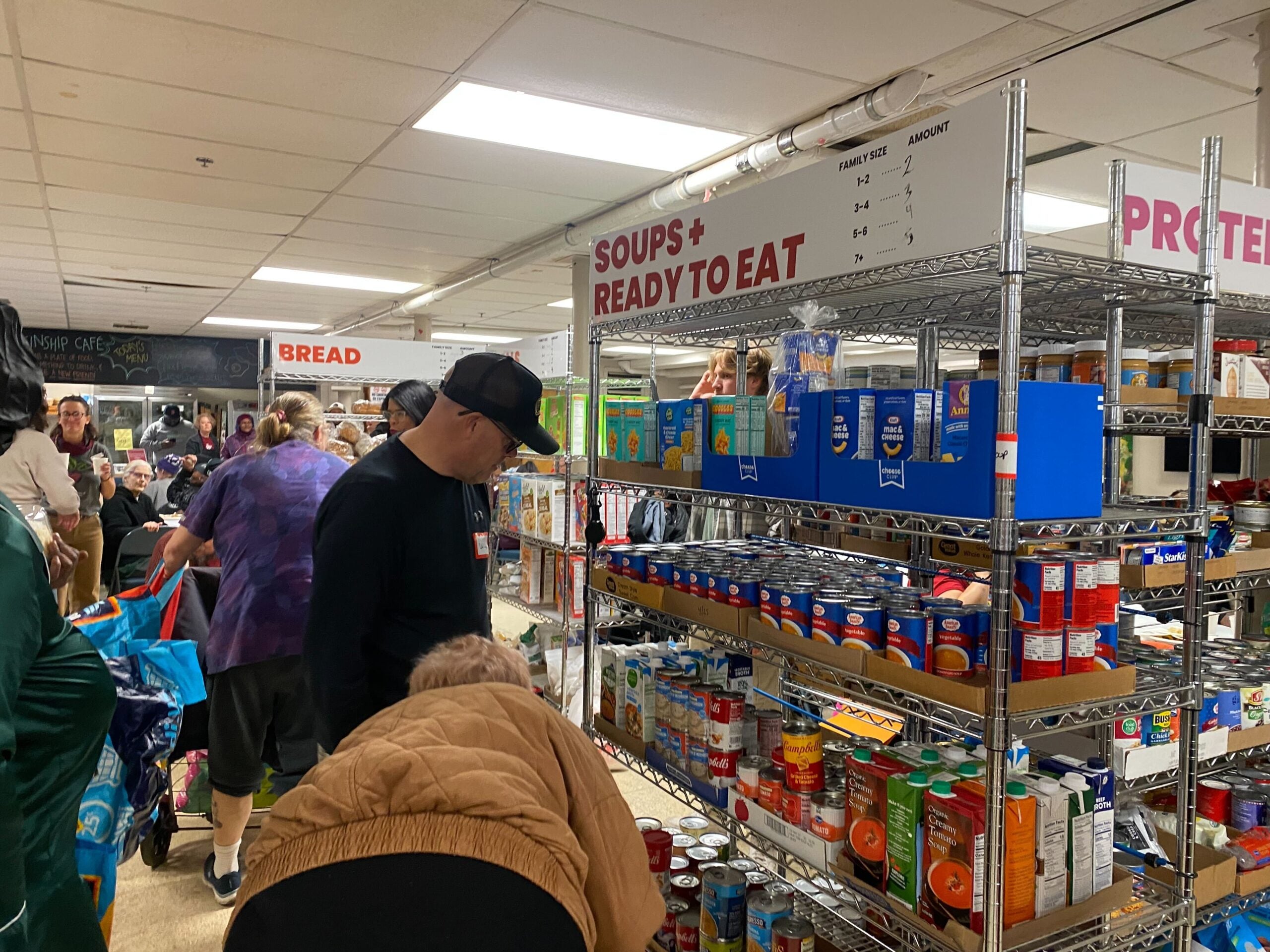More than 700,000 Wisconsinites are no longer receiving additional food assistance as the federal government ends the COVID-19 public health emergency.
In Wisconsin, 718,526 people receive FoodShare, according to the most recent DHS data. That’s the state’s name for the federal Supplemental Nutrition Assistance Program, or SNAP. All of those participants received emergency allotments of at least $95 during the pandemic. But those additional benefits expired on March 1.
Anti-hunger advocates worry the cutoff of additional benefits will cause demand for help from food pantries to soar.
News with a little more humanity
WPR’s “Wisconsin Today” newsletter keeps you connected to the state you love without feeling overwhelmed. No paywall. No agenda. No corporate filter.
The additional benefits went to 346,628 Wisconsin households as of February. That translated to more than $77 million in benefits statewide each month.
Destany Whidbee, 26, said she received help from the Hunger Task Force while she was attending school at Milwaukee Area Technical College. A single mother to a 1-year-old, Whidbee said those extra dollars made a difference.
Since the extra benefits ended in March, Whidbee said she’s had to ask people to borrow money numerous times as she struggles to make ends meet. And between paying for rent, food and childcare, she said, “everything is expensive.”
“They cut like $300 off my food stamps. I get like $185 a month, and that doesn’t cover anything, to be honest with you,” Whidbee said. “When you go grocery shopping with a toddler, you gotta buy everything — milk, snacks, everything.”
The additional benefits are ending at the same time that more than 1.6 million Wisconsinites are at risk of losing Medicaid coverage if they don’t renew their enrollment.
Those combined financial stressors on households are causing food pantries to brace for higher demand.
“We’re skyrocketing back up to pandemic heights and beyond now,” said Michelle Orge, president and CEO of Second Harvest Foodbank of Southern Wisconsin.
In 2019, food banks distributed about 1 million pounds of food per month across their 16 different counties, according to Orge. In 2020, that number grew to about 2 million pounds. In 2021 and 2022, that figure started to decline, but over the last nine months, it’s on the rise again, she said.
Orge said now they’re back up to at least 2 million pounds.
She said everyone is strongly committed to bringing people nutritious and culturally responsive foods — not just canned goods. But it’s difficult.
“We’re just struggling to keep up with getting the food out there,” Orge said. “The more food the pantry needs, the more deliveries we need to make, the more volunteers they need to restock the shelves, the more space that they need that they don’t have.”
Orge said she has not yet received data on the number of clients their pantries saw in March. But she said some of their partners reported seeing two- to three times the number of people.
“Based on the number of pounds that have been requested by partners in March, we’re going to have a record month,” she said. “If that’s any indicator of the way March has gone, I anticipate April’s going to be as big or bigger.”
About 10.2 percent of the U.S. population is food insecure, according to the U.S. Department of Agriculture. On average, people who receive SNAP benefits get about $6 per day, according to findings from the nonpartisan research institute the Center on Budget and Policy Priorities. Of the 41 million SNAP participants, more than half are in households with children.
In 2020, an estimated 415,400 Wisconsinites were food insecure, according to data from Feeding America.
Orge said the organization is seeing a dramatic increase in the number of people looking for help. She said that a senior living alone who was receiving around $280 in SNAP benefits at the height of the pandemic could now get as little as $23 a month in benefits.
Work requirements to return
FoodShare has work requirements, with some exceptions. Under FoodShare, able-bodied adults ages 18 to 49 without children at home must work at least 80 hours a month. Other options are to participate in government-approved work programs or work and join a program for at least 80 hours each month combined. People can also meet the requirement by joining the free FoodShare Employment and Training program.
Those requirements were waived during the pandemic but are now returning, said Sherrie Tussler, executive director of Hunger Task Force in Milwaukee.
“There just wasn’t enough time to deal with all the people that were applying,” she said. “The federal government expedited the food share system by reducing the total burden of proof for the applicant.”
Tussler said that starting in April, people will receive letters requiring them to go to an orientation for a work program or verify their exceptions from work requirements. People have up to 30 days, she said, before they receive time-limited benefit letters warning that after 90 cumulative days, they will no longer be eligible unless they prove they are working.
Numbers are holding steady so far, Tussler said, but “people are just now recognizing that they’ve lost their benefits.”
“They’re calling our office and asking, ‘What’s wrong?’ or ‘How do I fix this?’ And we’re anticipating that probably by June, people will really be cash-strapped and needing emergency food,” she said.
Tussler said she’s most concerned about the lack of information and knowledge, since so many people applied for benefits during the pandemic. A number of factors prevent eligible people from receiving FoodShare benefits they are entitled to under the law, she said.
“They may not read or write English, so they don’t understand the communications that they’ve gotten from the state. They may have difficulty submitting their verification because they don’t have access to broadband or a computer or a smartphone,” she said.
Among those who may experience the deepest losses are seniors and people living with disabilities, Tussler said. That’s because they’re more likely to live in subsidized housing and aren’t eligible for as much in FoodShare benefits.
Tussler said officials “can’t pay for this program forever at the level that it was,” but said it should not have ended so abruptly.
“If I was running a social program, and I had to stop it, I would reduce the assistance, I would educate and inform. And over time, meter the resources I had out in a more manageable way, rather than to just have a sudden cut,” she said.
Wisconsin Public Radio, © Copyright 2026, Board of Regents of the University of Wisconsin System and Wisconsin Educational Communications Board.




